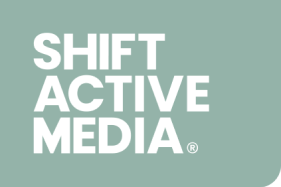Bath | 13.06.2025 | News
Google I/O 2025: AI’s New Pace for Cycling

SHIFT’s Head of Media, Tom King, got a front-row seat at Google I/O 2025. Here are his key takeaways.
At Google I/O 2025, more than 100 product updates were announced, making it clearer than ever that AI now sits at the heart of everything Google is building.
For brands, and especially for those in competitive markets like cycling, these changes aren’t just interesting headlines. They’re redefining how we approach search, content, and advertising. Understanding what’s coming is key to staying visible and competitive.
Search is Changing: AI Overviews & AI Mode Arrive
The standout news this year is the expansion of AI Overviews and the introduction of AI Mode in Google Search. Powered by Gemini AI, Google’s search experience is becoming far more personalised and interactive. This shift has major implications for content and advertising strategies, particularly for businesses that depend on organic and paid search to reach their customers. Google reports increased engagement where AI Overviews are active. But this also accelerates the trend of "zero-click" searches, where users get their answers directly in search without visiting websites. For marketers, ranking on keywords alone won’t cut it. It’s now about becoming a source Google trusts enough to cite directly in AI-generated answers.
AI Mode & Conversational Discovery
AI Mode takes things further, offering a fully conversational search interface. Users can ask complex, multi-part questions, with Gemini holding a dialogue to refine and expand the search. Features like Deep Search and AI-powered shopping are reshaping how people research purchases. A cyclist might start with a broad search about touring bikes, and through a series of follow-ups, narrow it down to highly specific recommendations — even pulling in visual search to identify components based on images or videos.
AI-Powered Creative & Smarter Ads
AI isn’t just transforming search - it’s changing how we create and run ads too.
-Generative Creative Tools
Google introduced major updates to its creative AI tools, like Imagen 4 for images and Veo 3 for video. These allow marketers to produce high-quality visuals and video content directly from text prompts, making it easier to generate assets quickly and scale campaigns with greater agility.
-Smarter Ad Placements & Optimisation
Google Ads is fully embracing AI as well. Ads will now appear directly within AI Overviews, and testing has begun for ad placements inside AI Mode itself. This offers brands the chance to get in front of customers earlier in the buying journey, before they've even reached a product page.
Meanwhile, AI-driven Smart Bidding is becoming more advanced, better at spotting valuable but less obvious queries, and directly assisting with ad creative. The result: sharper targeting, better messaging, and more efficient spend.
What This Means for Cycling Brands
For cycling brands, these updates have some very specific implications.
-Publisher Authority & AI Synthesis
Trusted publishers remain critical. With AI Overviews pulling information from authoritative sources, strong media coverage, in places like Cycling Weekly, BikeRadar, and others, can directly influence whether your brand appears in AI-generated answers. Securing positive reviews, detailed product coverage, and technical deep-dives in these trusted outlets will help ensure visibility as Google’s AI continues to shape search results.
-Complex Research Fits Cycling's Buying Journey
The cycling market is highly technical. Buying a bike, upgrading components, or choosing performance nutrition often involves detailed, multi-step research. AI Mode’s ability to handle layered, complex questions aligns perfectly with how cycling consumers shop. A typical query might be: “What’s the best gravel bike for long-distance touring under £3,000, with 45mm tire clearance and bikepacking mounts?” Brands need to make sure their product data, specifications, and key selling points are clear, structured, and easily understood by AI. Ambiguous or poorly presented information could reduce your chances of being surfaced.
-Catering to the Enthusiast
Cyclists are passionate and detail-oriented, often asking highly specific, niche questions. The shift towards conversational and multimodal AI supports this behaviour. Brands should focus on developing expert-level content: detailed FAQs, comprehensive product pages, knowledge hubs, and high-quality video guides that speak directly to the enthusiast mindset.
Key Takeaways for Marketers
AI is driving a major shift in how people search, discover, and interact with content. Marketers will need to adapt, quickly.
-Content Strategy: Build authoritative, detailed content that positions your brand as a trusted expert. Strong structured data and clear signals of expertise, authoritativeness, and trust (E-E-A-T) are becoming even more important.
-Advertising Approach: Test and adapt to emerging AI-powered ad formats. Create compelling, relevant campaigns designed to perform in conversational search environments.
-Holistic Experience: Build a seamless, valuable experience across every Google touchpoint. Understand your audience’s evolving needs, and use AI as a tool to meet them more effectively.
Google I/O 2025 makes one thing clear: AI is now firmly embedded in digital marketing. For brands willing to lean into these changes, there’s a real opportunity to stay ahead. At SHIFT, we’re already working closely with clients to help navigate this evolving landscape and turn these developments into competitive advantage. Drop Tom a note if you want to know more. Tom.king@shiftactivemedia.com

The latest news from SHIFT Active Media








